 |
|
||||||||||||||||||||||||||||||||||||||||||||||||||||||||||||||||||||||||||||||||||||||||||||||||||||||||||||||||||||
|
||
The History of Coffee
According to legend, the Arabs guarded the fertile seed of the Coffea Arabica. Circa 1650 AD, Baba Budan, a Moslem from India pilfered coffee seeds and returned to southern India. There he planted the seeds in the Chikmagalgur hills starting the growth of the original trees known as var. Old Chick, providing approximately one-third of India's coffee crop. Word spread about Indian coffee and the French attempted to produce coffee in Dijon but their attempts were futile due to the cold as they quickly learned that the coffee tree can not endure frost. Next, the Dutch planted the seeds in Java where they flourished and established a dependable crop. In 1715, Louis XIV of France learned of this coffee tree and soon had a passion for coffee. He was granted a favor from the Dutch, who went to great lengths to obtain a coffee tree, the infamous Noble Tree. This tree traveled from the Arabian port of Mocha then to Java across Holland to its final destination in Paris. The first greenhouse in Europe was built to shelter the Noble Tree. This coffee tree flourished and produced a substantial crop. The Noble Tree gave birth to billions of Arabica trees, which can still be found today growing in Central and South America. Chevalier Gabriel Mathiew de Clieu brought sprouts from the Noble Tree to Martinique in the Caribbean circa 1720. Those sprouts flourished and 50 years later there were 18,680 coffee trees in Martinique enabling the spread of coffee cultivation in Haiti, Mexico and the islands of the Caribbean. The Noble Tree also found its way to the island of Reunion in the Indian Ocean known as the Isle of Bourbon. The plant produced smaller beans and was deemed a different variety of Arabica known as var. Bourbon. The infamous Santos coffee of Brazil and the Oaxaca coffee of Mexico are the progeny of that Bourbon tree. Circa 1727, the emperor of Brazil sent Francisco de Mello Palheta to French Guinea to obtain coffee seeds to become a part of the coffee market. Francisco initially had difficulty obtaining these seeds yet he captivated the French Governor's wife and she in turn, sent him enough seeds and shoots which would commence the coffee industry of Brazil. In 1893, the coffee from Brazil was introduced into Kenya and Tanzania, not far from its place of origin in Ethiopia, 600 years prior, ending its transcontinental journey. |
|
Coffee and Europe
The Dutch, being practical and wise, could see its potential as a cash crop and imported it to Java. Later they presented a coffee tree to Louis XIV of France. His love of a good cup of coffee led him to build the first green house to nurture his beloved tree. Coffee spread like wild fire across the Continent, gathering an ever growing group of devotees. Coffeehouses sprung up throughout Europe. They would play a roll in the gathering of poets, artists and philosophers of the Age of Reason. In England, known as the bastion of tea, coffee was embraced emphatically. Such institutions as Lloyd's of London would begin as coffeehouses. As in the Ottoman Empire, coffeehouses would be the congregating places of those who would influence their era. In fact, coffeehouses became synonymous with places of free speech. Thiswould have consequences when it was imported to America. |
|
Coffee and Revolution
Americans have had a love affair with coffee ever since. It was an important ration for soldiers through many wars. When the Confederates could not receive coffee shipments during the Civil War, they substituted chicory for it. To this day, New Orleans coffee remembers their deprivation with coffee mixed with chicory (and the world's best cafe aulait-author's preference). Coffee has not only held its own through centuries of American tradition, but has become even more popular in the last few decades. Americans are rediscovering the enjoyment of specialty coffees with their rich taste and robust flavors. In the U.S., coffee is in no danger of dying out. Coffeehouses are once again the popular meeting places of artists,students, philosophers, as well as all who love the aromatic taste of a cup of joe. Of course coffee didn't just stop in the U.S. It was destined to conquer the New World more thoroughly and peacefully than any other immigrant. |
|
Coffee in the New World
Coffee came to Brazil in another wonderful escapade. Francisco de Melo Palheta is remembered in legend as suave and gallant. In order to get coffee seeds, he turned his considerable charms on the wife of the governor of French Guiana. Through the aid of his lover, Don Francisco was able to smuggle the green beans out in the following way. As the lady bade farewell she handed him a bouquet of flowers. Hidden inside were the precious seeds of coffee, the first to planted in Brazil. |
|
The Coffee of Costa Rica
Costa Rica is proud of its tradition in environmental conservation. 20% of its territory of rain forest is legally protected. Their ecological awareness shows itself in the production of their coffee as well. Coffee pulp and waste in the residual water from the coffee mills is treated to purify them before they are return to rivers. Byproducts from coffee are used in fertilizer, cattle feed and fuel for kilns. In this, and many other ways, Costa Rica strives to make a contribution to sustaining our global environmental resources in some small way. Cafe Britt is one of the largest coffee producers of Costa Rica. Their rich blend of coffee brings the tastes of the different Central Valley locations into one robust bouquet of flavors. Cafe Britt's blend is consistent in its taste and comes directly from the plantationto your cup. The coffee tree is one of the most ingenious of God's creations. It blossoms and produces berries all at the one time. It can fruit once a year, or anything up to five times a year, depending on the altitude at which it is grown. What does it look like? A coffee tree is rather small for a tree rather large for a shrub. It varies from 2 to 4 metres high. It is an evergreen with spear shaped leaves, which are waxy and bright. The blossom lasts for only two or three days but then little green berries appear, which ultimately turn bright red. This is why coffee people always talk about coffee cherries. All the cherries do not ripen on the tree at the one time. If you pick the beans too late then the coffee is poor and spoilt. If you pick the beans too early, then they never ripen. The best coffee needs to be picked by hand - many hands. Coffee is labour intensive and this is why for hundreds of years it has been grown in areas where labour is cheap. You can grow coffee in your backyard but you need a special backyard. There should be no frost. It likes a nice year round temperature of 20-25 C; warm, but not too hot. As for soil, they prefer a deep volcanic soil with lots of humus and a healthy rainfall. The tree likes sunlight but not too much; partial sunlight during the day is best. That is the reason coffee grows so well at high altitude; it tends to get shade from the mountains. At low altitude it is best to give it protection from the other trees. Young coffee seedlings are propagated in nurseries and when they are nearly a year old they are transplanted into fields where they are put in deep well-manured holes about three metres apart. The coffee cherry itself is interesting, it looks like a cherry, but there is the similarity ends. Under the red skin there is a yellowish, sweet, gummy pulp and inside, two green beans which face each other. The beans are covered with skin called ‘silver skin'. |
|
The Coffee Tree
What does it look like? A coffee tree is rather small for a tree rather large for a shrub. It varies from 2 to 4 metres high. It is an evergreen with spear shaped leaves, which are waxy and bright. The blossom lasts for only two or three days but then little green berries appear, which ultimately turn bright red. This is why coffee people always talk about coffee cherries. All the cherries do not ripen on the tree at the one time. If you pick the beans too late then the coffee is poor and spoilt. If you pick the beans too early, then they never ripen. The best coffee needs to be picked by hand - many hands. Coffee is labour intensive and this is why for hundreds of years it has been grown in areas where labour is cheap. You can grow coffee in your backyard but you need a special backyard. There should be no frost. It likes a nice year round temperature of 20-25 C; warm, but not too hot. As for soil, they prefer a deep volcanic soil with lots of humus and a healthy rainfall. The tree likes sunlight but not too much; partial sunlight during the day is best. That is the reason coffee grows so well at high altitude; it tends to get shade from the mountains. At low altitude it is best to give it protection from the other trees. Young coffee seedlings are propagated in nurseries and when they are nearly a year old they are transplanted into fields where they are put in deep well-manured holes about three metres apart. The coffee cherry itself is interesting, it looks like a cherry, but there is the similarity ends. Under the red skin there is a yellowish, sweet, gummy pulp and inside, two green beans which face each other. The beans are covered with skin called ‘silver skin'. It takes five years for a tree to produce good fruit, yet after 15 years a coffee tree is on the decline. Nor is its output all that great. When you purchase 500 grams of coffee, ponder the thought that this is a little more than the output for a tree in one year!And what beverage requires so much careful preparation? First the cherries have to be picked. Harvesting is a time of intense labour, almost every human that can walk or stand. All the family, friends and neighbours are called out. A good worker pick's 90kg in a day, but the beans do not ripen all at once so there could be four, five, six excursions back to the one tree.Next the beans have to be extracted from the gummy fruit and the various layers inside. |
|
Coffee Beans
|
|
Coffee Arabica
The Arabica type of coffee beans has the most flavored profiles while Robusta is grown predominantly because of its ability and hardiness to thrive. Also Arabica has the various distinct flavors and characteristics of coffee beans. Under the Arabica type of coffee beans there are variations as well that are named after the region or country where they are found predominantly or have originated. In some countries like Ethiopia, there are numerous expensive variations of Arabica coffee beans growing in every regions of the whole country. There are more variations of Arabica coffee beans found in country of Africa because the country is the first one in the entire world that valued drinking coffee. Three of the topmost variations of Arabica coffee are found in Africa as well namely the Yirgacheffe, Sidamo and Harrar. Kenya is also one of the countries where Arabica plants beans are cultured for coffee drinking. It calls its Arabica coffee beans as Kenyan. Other countries where Arabica coffee beans are produced include Uganda and Tanzania. Uganda also majorly produces Robusta coffee beans. Few of the variations of Arabica coffee beans are to be found in Indonesia and Java is the most popular variation in the country. Java variation adapted its name from the region of Java in Indonesia. Throughout the time, it had become synonymous with the word coffee itself. More variations of Arabica coffee beans are also found in Hawaii where the popular variation was called the "Hawaiian Kona", which grows on the Mountain Hualalai's slopes. |
|
Coffee Liberica
|
|
Coffee Robusta
Robusta has become increasingly popular; it is ideal for instant coffee. But robusta certainly does not win on all points - it doesn't have the flavour and aroma of Arabica. |
|
Coffee Prices
The sales of coffee have become more and more complex. Many of the merchants buy and sell on the futures market; that is, they estimate trends, the market, even the weather, and settle on price, say, for so many bags, to be delivered in two years time. It is a delicate business, like estimating the future of gold, the dollar or oil. |
|
Coffee Roasting Method
In the roasting process there is a change in the chemical composition of the bean; all sorts of elements, chiefly sucrose, are decomposed, carbon dioxide and carbon monoxide are released. The result is an astonishing loss of weight, anything up to 20 percent. Depending on the darkness of the roast, bulk can go up by 80 percent. It was probably an Ethiopian some time in the 13th century who first thought of roasting coffee. For nearly 700 years the system has hardly changed. It was common to roast the coffee at home or in the coffeehouse immediately before drinking. In the mid-19th century the cylinder roaster was developed, a perforated cylinder which turned over fire and in later years over gas or electricity. With the 20th century the coffee merchants developed modern industrial equipment for roasting. First there were huge cylinders, then they developed systems for delivering hot air at high speed across the beans. Next came the continuous roasters with beans pouring through in a never ending stream, being heated to 240oC for periods of eight to twelve minutes. There was a need, however, to suit the variety of palates; not everybody likes the same sort of roast. There are four main categories. |
|
Coffee - Non Roasting Method
|
|
Coffee - Light roastFor delicate, mild beans. Good for breakfast coffee, the coffee you might drink with milk and sugar. |
|
Coffee - Medium roastNormal coffee the way the French, Americans and the Australians like it. |
|
Coffee - Full roastVery dark in colour, a bitter powerful drink, and the way they like it in Italy or Vienna. |
|
Coffee - Double roastAlmost black. Not good for the subtleties of the original flavour, but very strong and bitter. This is right for espresso coffee or the thick syrupy drink that is the passion in Latin America or Turkey. |
|
Caffeine in Coffee
Caffeine content of a cup of regular espresso coffee will range from 90 to 120mg, depending on the types of coffee used in the blends and the strength of the brew. The roasting process alters caffeine very little. It is readily water-soluble at temperatures above 170F and consequently is fully released into the finished beverage during brewing. Caffeine varies between species of coffee trees. Arabica coffees contain about 1% caffeine by weight in green form, while robusta beans contain about 2% by weight. The decaffeination methods must remove 97-99% of the caffeine present in order for the coffee to be sold as decaffeinated. This is 97-99% of the original caffeine content, meaning that decaffeinated coffees are, for all practical purposes, caffeine free. While a cup of regular coffee might contain 100mg or more of caffeine, a typical cup of decaffeinated contains less than 3mg. |
|
Coffee Taste Q & A
Answer: The answer to this question depends on a number of factors. Here are some tips to help you obtain a better cup of coffee: tart with fresh coffee. If you are not going to use the coffee that day, keep it in the refrigerator or freezer. Always use fresh, cold water and avoid chemically treated coffee. Use the correct grind for your coffee brewer. Use the right ratio of coffee to water (the basic recipe is 2 level tablespoons of coffee per 6 ounces of brewing water). Keep your coffee brewer and grinder clean by wiping off coffee oils and dust. Be sure your coffee brewer heats to the proper temperature (200 degrees F). Use your coffee soon after it is brewed or store it in an airpot away from a heat source Never reheat coffee once it is cooled. (Iced coffee anyone?) Question: Does each type of coffee taste distinctively different? Answer: Coffee grows in many different geographic areas. The major coffee growing areas are: Central and South America Africa Indo-Pacific & Asia Within each major growing area, individual micro-climates, as well as soil conditions, altitude, horticultural practices and processing methods, determine the unique characteristics of each harvest.. Individual origins, such as Colombian, have different grades which differ subtly from each other. (Colombian Excelso vs. Colombian Supremo, for example) Question: How does the roast affect a coffee's taste? Answer: As coffee develops during the roasting process, it becomes visibly darker in color, expands in size (becomes less dense), and loses weight (18%-23% net loss). Generally, coffee becomes less bitter as it roasts, but it also becomes less sweet. So, the Roastmaster's task is to determine, for each individual coffee, the ideal development through roasting, balancing a pleasant bitter accent with residual sweetness and acidity. Question: Why do some coffees seem stronger than others? Answer: Flavor and Strength are separate components of the coffee experience. Technically, the strength of any given batch of brewed coffee is determined by the amount of coffee used, by weight, in comparison to the amount of water used, by liquid volume. Assuming that the amount of water stays the same, the more coffee that is used, the stronger the brewed result. Question: What do light, medium and full-bodied mean? Answer: "Body" describes the tactile sensation of thickness or texture on the tongue and to the inner surfaces of the mouth. "Light", "medium", and "full-bodied" refer to the intensity of this sensation. |
|
Coffee Differences Q & A
Answer: The differences among gourmet coffees lie primarily in their country or region of origin and their quality or grade. Coffees from different regions have distinct flavor characteristics, which are influenced further by the time of harvesting, method of processing and ultimately, the degree of roast. Question: What is Arabica coffee? Answer: Arabica coffee is the seed from the fruit of the Arabica botanical species of coffee tree. Arabica trees produce a fine quality coffee and require rich, fertile soil, high altitudes ( 2,000 feet above sea level and above) and the right balance of warmth, rainfall and humidity. Because Arabica trees are susceptible to disease, frost and drought, they require careful, labor-intensive cultivation and produce only 1 to 1.5 pounds of green coffee per year. Arabica coffee beans are selected as gourmet coffee because, when brewed, they have a delicate flavor and aroma. Question: Why are coffees blended? Answer: The better quality high altitude coffees from each producing country have distinctive flavor, body, and aroma characteristics that many people prefer to enjoy straight. Blending coffee is the practice of mixing these characteristics to create a "well-rounded" cup that offers the best of several coffees or to create a new taste from complementary coffees. Blending increases variety and allows you to create a personalized cup. |
|
Preparation & Storage of Coffee - Q & A
Answer: Most coffee brewing systems have an optimum brewing capacity. It is almost always necessary to increase the ratio of coffee to water when brewing smaller amounts. The basic recipe is 2 level tablespoons of coffee per 6 ounces of brewing water. The ratio may seem strong, but that amount develops the proper taste and a balanced brew. If overpowering to the individual taster, the brew can easily be diluted with hot water in the cup. Question: How can I tell if coffee is fresh? Answer: Whole bean coffee has a shelf life of two or three weeks after roasting, although modern packaging technology can extend shelf life. The fresh, vibrant aroma of whole bean coffee is unmistakable, while old coffee beans lack aroma. Consume coffee within one week to 10 days after grinding because coffee begins losing its valued taste characteristics the moment it is ground. Question: How can I keep coffee fresh longer? Answer: Store ground coffee in an airtight, sealed container (preferably glass) in the refrigerator. Store whole beans the same way. Generally, if you use them up in less than a week after purchase, the refrigeration is not necessary. Question: Is it a good idea to grind coffee at home? Answer: Grinding coffee fresh just before you use it is always better. Whole beans' natural protection against staling is destroyed when they are ground. However, make sure your home grinder can be set to the specific grind appropriate for your brewer. An incorrect grind can make a good coffee taste bad. |
|
Coffee Equipment Q & A
Answer: Yes. Coffee is naturally oily. This oil builds up in your machine and can adversely affect the taste of your coffee. At least every day you should wipe the sprayhead area and clean the filter basket. You should also have a technician come in and thoroughly clean and delime your machine every 6 months to a year depending on how much you use your machine. For home models, follow a similar rigorous cleaning routine and occasionally run a solution of vinegar water through the machine to clean out built up oils and mineral residue. (Be sure to flush thoroughly!) Question: Do espresso machines require a lot of service and maintenance? Answer: Traditionally, yes, but you can reduce how frequently and how costly that service will be by buying machines that have been made for the US market. These use standard, American-made parts that are less expensive and easier to order. Be sure to buy your machine from a company with a good reputation and a good warranty. Buying from a company with US based office with an inventory of common parts will help to reduce the cost of repairs and down-time of your machine. Question: Is it a good idea to install a water filtration system? Answer: Yes. A good water filtration and water softening system appropriate to your local water conditions reduces stress on espresso machines by filtering out unwanted particles in the water. This reduces how often you need to service your machine. Filtering and softening your water will also improve the taste of your espresso. Question: My espresso machine doe s not produce a good crema. Should I get another machine? Answer: Do not start looking for that new machine until you have checked some less expensive factors, such as: The Grind. It may be too coarse or too fine. The level of humidity can affect what grind you need. Buy your espresso coffee whole bean and grind it on site so that you can adjust throughout the day. The Amount. Try using more or less coffee in the porta filter. The Tamp. Usually it is too loose. Try a firmer tamp. Then again, it may be too firm (better tell those body building baristas to hold off a little!) The Cup. If the diameter of the cup is too wide, it will not hold a crema very long. Be sure to use demitasse cups made for espresso. The Freshness. Use only fresh coffee and grind coffee fresh for each espresso. The Blend. Be sure you are using a coffee blend that has been created especially for making espresso. Talk to your coffee supplier to see what they offer. |
|
Coffee Quality, Taste & Types around the WorldBRAZIL - Brazilian Coffee Characteristics• The overall quality of Brazilian coffee is average. The characterisitics are Sweet (some describe it as "fruity"), neutral taste. The coffee name to look for is Bourbon Santos COLUMBIA - Columbian Coffee Characteristics• The overall quality of Columbian coffee is good to excellent. The characterisitics are Sweet, good flavor, full body, slight acidity in taste. The coffee names to look for is Medellin, Armenia, Manizales. Regardless of origin, Supremo is the highest grade. COSTA RICA- Costa Rican Coffee Characteristics• The overall quality of Costa Rican coffee is excellent. The characterisitics are hearty and rich in taste. The coffee names to look for is Tarrazu, Tres Rios, Heredia, Alajuela. "Strictly hard bean" is best grade. DOMINICAN REPUBLIC - Dominican Coffee Characteristics• The overall quality of Dominican coffee is above average to excellent. The characterisitics are Varies. Bani is more mellow, while Barahona is heavier and more acidic in taste. The coffee names to look for is Bani, Ocoa and Barahona. ECUADOR - Ecuadorian Coffee Characteristics• The overall quality of Ecuadorian coffee is average to above average. The characterisitics are Sharp acidity. May be hard to find in stores. EL SALVADOR - El Salvadorian Coffee Characteristics• The overall quality of El Salvadorian coffee is average. The characterisitics are Medium acidity, neutral to a mild flavor. The coffee type to look for is High Grown. ETHIOPIA - Ethiopian Coffee Characteristics• The overall quality of Ethiopian coffee is inconsistent, in part because of internal political problems. The characterisitics are Sweet flavor with floral aroma. Much of the coffee is harvested from wild trees. The coffee types to look for is Yergacheffe, Harrar and Djimma. GUATEMALA - Guatemalan Coffee Characteristics• The overall quality of Ecuadorian coffee is excellent, in part because of internal political problems. The characterisitics are Rich, spicy or smoky flavor (growers burn pitch near the plantations in severe weather to protect their crops; this smoke lends the beans their beans distinctive flavor).. The coffee types to look for is Antigua, Coban, Huehuetenango. "Strictly hard bean" best available grade. HAITI - Hahitian Coffee Characteristics• The overall quality of Haitian coffee is above average, in part because of internal political problems. The characterisitics are Sweet, mellow, fair-bodied with a soft, rich flavor. Continuing political problems in Haiti may make its coffees difficult to find. The best grade is "strictly high-grown washed. JAMAICA - Jamaican Coffee Characteristics• The overall quality of Jamaican coffee is excellent. The characterisitics are Rich, full-bodied, and well balanced. Continuing political problems in Haiti may make its coffees difficult to find. The coffee types are Wallensford Blue Mountain, Silver Hill Estate Mountain. Watch out for "Blue Mountain style," a blend of beans intended to have the same flavor characteristics as Blue Mountain, but which may contain no beans from that plantation. There is also a lower quality Jamaican coffee called Jamaican low mountain that is Average to below average, far inferior to Jamaican high mountain. This type of coffee is used as filler in cheaper coffee blends. INDONESIA - Indonesian Coffee Characteristics• The overall quality of Indonesian coffee is good. The characterisitics are Spicy or slightly smoky, full-bodied, with a strong flavor and little acidity. The coffee type is Rare Old Java. KENYA - Kenyian Coffee Characteristics• The overall quality of Kenyian coffee is excellent. The characterisitics are Full-bodied, rich, a bit winy, with a hint of black currant. The coffee type AA which is considered a best grade. KONA - HAWAII - Kona Coffee Characteristics• The overall quality of Kona coffee from Hawaii is above average to excellent. The characterisitics are Smooth and mild, rich flavor, medium acid in taste . The coffee type is Kona and is considered high grade. Watch out for "Kona style," which may have similar flavor but does not contain any Kona beans. MEXICO - Mexican Coffee Characteristics• The overall quality of Mexican coffee is above average. The characterisitics are Fine acidity, light, delicate body, and pleasantly mellow flavor. The coffee types are Chiapas (Tapachula), Coatepec and Oaxaca. NEW GUINEA - New Guinea Coffee Characteristics• The overall quality of New Guinea coffee is above average. The characterisitics are Similar to Java, but more understated. The coffee type is Arona. NICARAGUA - Nicaraguan Coffee Characteristics• The overall quality of Nicaraguan coffee is inconsistent but can be above average. The characterisitics are Fair acidity, mild flavor, medium to light body. The coffee types are Jinotega and Matagalpa. PERU - Peruvian Coffee Characteristics• The overall quality of Peruvian coffee is inconsistent but can be above average. The characterisitics are Good flavor, with medium body, mild acidity, aromatic. The coffee type is Chanchamayo. SUMATRA - Sumatra Coffee Characteristics• The overall quality of Sumatra coffee is above average. The characterisitics are very rich, full-bodied, fairly acidic, aromatic. The coffee types are Ankola and Mandheling. TANZANIA - Tanzanian Coffee Characteristics• The overall quality of Tanzanian coffee is average. The characterisitics are Sharp, winy, acidic, rich, medium to full body. The coffee types are Moshi, Kilimanjaro, Arusha; high-grade AA. UGANDA - Ugandian Coffee Characteristics• The overall quality of Ugandian coffee is above average. The characterisitics are Similar to Kenya, but with lighter body. The coffee types are Arabica beans rather than robusto; best region is Bugishu. VENEZUELA - Venezuelian Coffee Characteristics• The overall quality of Venezuelian coffee is excellent. The characterisitics areSmall beans, with winy, smooth flavor, spicy aftertaste. The coffee types are Maracaibos: Merida, Trujillo, Tachira. Best grade is Lavado Fino. YEMEN - Yemen Coffee Characteristics• The overall quality of Yemen coffee is Average to above average. The characterisitics are low acidity, may be sweet, delicate. The coffee type is Mocha ZIMBABWE - Zimbabwe Coffee Characteristics• The overall quality of Zimbabwe coffee is above average to excellent. The characterisitics are Winy, lighter-bodied with spicy aftertaste. The coffee type is Washed Coffee. |
|
Coffee - Different Generic RoastsCinnamon Roast• Also known as "New England Roast." Beans are very lightly roasted. American Roast• Also known as "Medium Roast." Not as dark as any of the European roasts. Viennese Roast• Roasted a little longer than regular American roast. City Roast• Darker than the standard American roast; Some roasters make this as dark as French Roast. Full City Roast• Even darker than City roast Continental Roast• Slightly lighter than French Roast French Roast• Also known as "Dark Roast." Indicates that the bean was roasted for a long time at a high enough temperature to bring the natural oil of the coffee to the surface. French Roast beans are often used to make espresso. Italian Roast• Also known as "Heavy Roast," this is the darkest roast, with beans roasted to a very dark brown. Also used for espresso. |
|
Common Coffee DrinksBreve• Espresso with steamed half-and-half. Cafe au Lait• Half French Roast coffee, half steamed milk. Cafe Latte• Even more milk than Cappuccino. Cafe Mocha• One shot espresso, one shot chocolate syrup; fill the rest of the cup with foamed milk, top with whipped cream. Cafe Ristretto• Extra-strong espresso, made with only one ounce of water and the regular amount of coffee grounds. Cappuccino• A drink made of one-third espresso and two-thirds hot milk and foam. Espresso• Dark-roasted coffee ground until fine and gritty, then tamped down into the filter basket so that the brewing water can't run through it too fast. Espresso con Panna• Espresso topped with whipped cream. Espresso Granita• Frozen espresso, crushed and served in a parfait glass with whipped cream. Iced Espresso• A double shot of espresso over crushed ice. Latte Machiatto• Steamed milk with a shot of espresso. Mochaccino• Espresso with foamed milk and chocolate syrup. Macchiato• Espresso served with a dollop of foamed milk. Red Eye• A mixture of half brewed coffee, half brewed espresso. |
|
Most Expensive Coffee in the World
Kopi Luwak the most expensive coffee in the world does exist, and those who drink the expensive coffee insist that it is made from coffee beans eaten, partly digested and then excreted by the Common palm civet, a weasel-like animal. "Kopi" the Indonesian word for coffee along with "luwak" is local name of this animal which eats the raw red coffee beans. The civet digests the soft outer part of the coffee cherry, but does not digest the inner beans and excretes them. Apparently the internal digestion ends up adds a unique flavor to the beans, removing the bitter flavor, and then beans are then picked up by locals and sold. The most expensive coffee beans can cost up to $600 a pound, and up to $50 per cup, if you can get over the fact that you are drinking such a strange brew. You would know if you drank the most expensive coffee in the world, because the quantities of it are tiny amounts. Information courtesy http://most-expensive.net/coffee-in-world. |
|
Home | Advertising Information | Contact Us
Copyright ©2002 Italian Recipes Trinakria Development. All rights reserved.
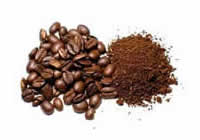 The Origins of Coffee
The Origins of Coffee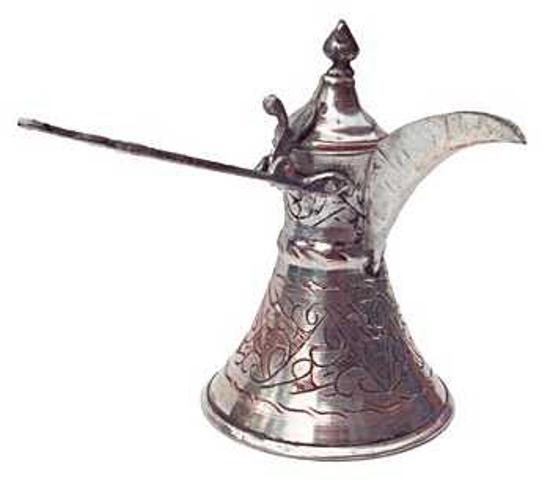 Coffea Arabica was discovered growing wild on the plateaus of central Ethiopia around 600 AD. The tree was found in Yemen on the southern tip of the Arabian Peninsula. Coffee as a bean was first worshiped for its medicinal properties then as a beverage for religious meditation. Moving forward, it found a home for itself in dwellings known as coffeehouses.
Coffea Arabica was discovered growing wild on the plateaus of central Ethiopia around 600 AD. The tree was found in Yemen on the southern tip of the Arabian Peninsula. Coffee as a bean was first worshiped for its medicinal properties then as a beverage for religious meditation. Moving forward, it found a home for itself in dwellings known as coffeehouses.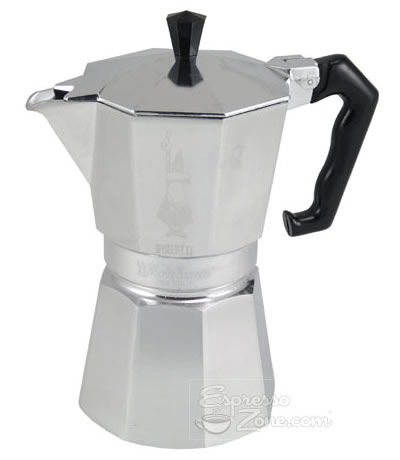 Europeans fell in love with the bewitching brew of the Middle East. By the seventeenth century, Pope Clement VIII was facing the rising tide of Islamic power. He was advised that coffee, coming as it did from the East, was a threat to Christianity. The Pope wisely tried a pot first. Far from agreeing to conspiracy theories and "coffee plots," he blessedthe drink and made it a Christian beverage.
Europeans fell in love with the bewitching brew of the Middle East. By the seventeenth century, Pope Clement VIII was facing the rising tide of Islamic power. He was advised that coffee, coming as it did from the East, was a threat to Christianity. The Pope wisely tried a pot first. Far from agreeing to conspiracy theories and "coffee plots," he blessedthe drink and made it a Christian beverage.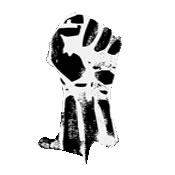 The first license to sell coffee in the American colonies was given to a woman named Dorothy Jones. Coffee and coffeehouses soon filled the colonies. It was in coffeehouses that the Revolutionaries met, here they planned the Boston Tea Party and gave the first public reading of the Declaration of Independence. Through meetings in coffeehouses the first Continental Congress was born.
The first license to sell coffee in the American colonies was given to a woman named Dorothy Jones. Coffee and coffeehouses soon filled the colonies. It was in coffeehouses that the Revolutionaries met, here they planned the Boston Tea Party and gave the first public reading of the Declaration of Independence. Through meetings in coffeehouses the first Continental Congress was born.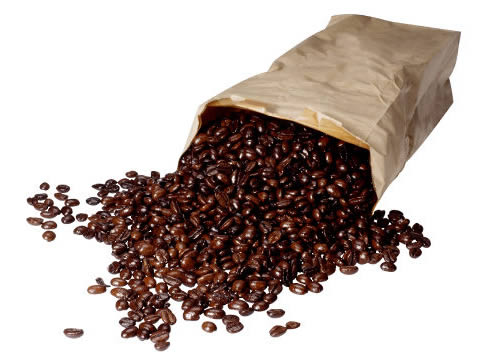 As hard is it is to believe today, coffee was unknown in the Caribbean and Latin America less the 300 years ago. It was through the ingenuity of one man, Gabriel Mathieu de Clieu, that coffee made its debut. Realizing the potential of bringing coffee cultivation to the New World, de Clieu sought out the French court. Through intrigue with a lady of the court and a royal physician, he smuggled out some seeds from the tree bestowed on the King of France. He traveled through storms and pirate attacks. And as if these heroic efforts were not enough, his ship was becalmed. Sharing his water rations with the one surviving plant, de Clieu brought coffee to Martinique. He was successful in bringing coffee plantations to the Caribbean. The French were just as jealous of their industry as the Arabs had been earlier in this story. But just as the Arabs were not able to contain the spread of coffee, the French would not be able to either.
As hard is it is to believe today, coffee was unknown in the Caribbean and Latin America less the 300 years ago. It was through the ingenuity of one man, Gabriel Mathieu de Clieu, that coffee made its debut. Realizing the potential of bringing coffee cultivation to the New World, de Clieu sought out the French court. Through intrigue with a lady of the court and a royal physician, he smuggled out some seeds from the tree bestowed on the King of France. He traveled through storms and pirate attacks. And as if these heroic efforts were not enough, his ship was becalmed. Sharing his water rations with the one surviving plant, de Clieu brought coffee to Martinique. He was successful in bringing coffee plantations to the Caribbean. The French were just as jealous of their industry as the Arabs had been earlier in this story. But just as the Arabs were not able to contain the spread of coffee, the French would not be able to either.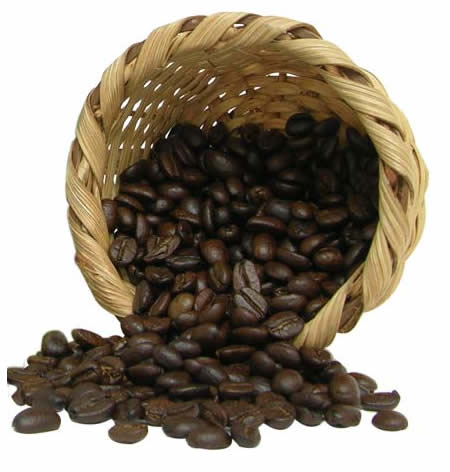 Coffee would become a thriving economy for many Latin American countries. In Costa Rica, coffee made its appearance in the late 1700's. There the coffee trees flourished in the high lands of the Central Valley. By 1820, they were exporting coffee to Colombia. Here it was repackaged under the name of "Cafe Chileno de Valparaiso" and sold to the British. Since its humble beginnings, coffee has become one of the most importantindustries in the country. Today Costa Rican coffee is famous in its own right. Such names as Tarrazu, Tres Rios and Orosi tell the connoisseur from which part of the Central Valley the coffee has come. Quality coffee is such a trademark of Costa Rica, that it is illegal to grow anything but arabica beans. When you see Cafe de Costa Rica, you can beassured it is 100% arabica.
Coffee would become a thriving economy for many Latin American countries. In Costa Rica, coffee made its appearance in the late 1700's. There the coffee trees flourished in the high lands of the Central Valley. By 1820, they were exporting coffee to Colombia. Here it was repackaged under the name of "Cafe Chileno de Valparaiso" and sold to the British. Since its humble beginnings, coffee has become one of the most importantindustries in the country. Today Costa Rican coffee is famous in its own right. Such names as Tarrazu, Tres Rios and Orosi tell the connoisseur from which part of the Central Valley the coffee has come. Quality coffee is such a trademark of Costa Rica, that it is illegal to grow anything but arabica beans. When you see Cafe de Costa Rica, you can beassured it is 100% arabica.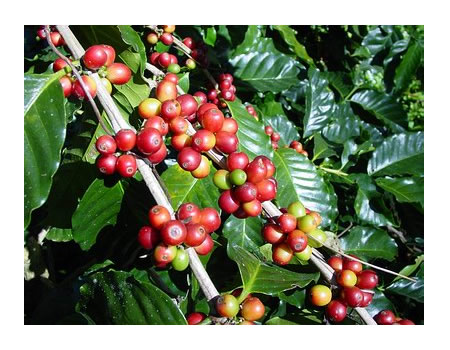 The coffee tree is one of the most ingenious of God's creations. It blossoms and produces berries all at the one time. It can fruit once a year, or anything up to five times a year, depending on the altitude at which it is grown.
The coffee tree is one of the most ingenious of God's creations. It blossoms and produces berries all at the one time. It can fruit once a year, or anything up to five times a year, depending on the altitude at which it is grown. There are three main varieties of beans. Actually, there are at least 50 different types of coffee trees, but only a few of them are commercially important. The three main varieties are Arabica, Liberica and Robusta. The next three topics below will give you a brief description. Actually there is a fourth variety found in Hawaii called Kona - Compared to Robusta and Arabica in the commercial world, Kona is much smaller yet very expensive. This type of coffee bean normally grows in the country of Hawaii. Though Kona is not being patronized as much by most common people in the market, it still has a very high demand worldwide due to its powerful aroma. Having a very powerful aroma and desirability, Kona is rarely blended with other kinds of drink flavorings.
There are three main varieties of beans. Actually, there are at least 50 different types of coffee trees, but only a few of them are commercially important. The three main varieties are Arabica, Liberica and Robusta. The next three topics below will give you a brief description. Actually there is a fourth variety found in Hawaii called Kona - Compared to Robusta and Arabica in the commercial world, Kona is much smaller yet very expensive. This type of coffee bean normally grows in the country of Hawaii. Though Kona is not being patronized as much by most common people in the market, it still has a very high demand worldwide due to its powerful aroma. Having a very powerful aroma and desirability, Kona is rarely blended with other kinds of drink flavorings. 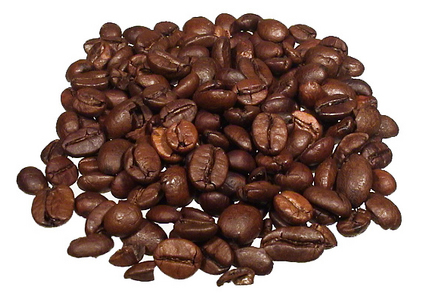 This is the coffee tree originally found in Ethiopia, the one that spread to Java, Sumatra, India, Arabia, the West Indies and Latin America. It remains the premium coffee and arabica grown at high altitude is slower growing. Unlike Robusta, the Arabica type of coffee beans covers 60% of the coffee production in the whole world because of the large bush that Arabica plants have. Also Arabica plants are very vulnerable to pests, disease and frost. With this reason, the coffee beans of Arabica plants are extremely expensive. Arabica coffee beans can be used on its wholesome form as well as it can be used as a base with Robusta for coffee blends. However, Arabica has a very delicate flavor that can be used as add-ons on the flavorings of coffee blends. But Arabica coffee beans still vary accordingly to the region where they are grown and used. In South and Central America, the Arabica coffee beans have the moderate aroma and body, which are used mostly for breakfast blends with American flavored coffees. Arabica coffee beans produce a superior grade of coffee known as the gourmet coffee because it contains half of the Robusta caffeine as well as more aromatic properties and desirable flavorings. Being a worldwide coffee variation, Arabica coffee beans are able to meet a fraction of the standard provide by the Specialty Coffee Association of America.
This is the coffee tree originally found in Ethiopia, the one that spread to Java, Sumatra, India, Arabia, the West Indies and Latin America. It remains the premium coffee and arabica grown at high altitude is slower growing. Unlike Robusta, the Arabica type of coffee beans covers 60% of the coffee production in the whole world because of the large bush that Arabica plants have. Also Arabica plants are very vulnerable to pests, disease and frost. With this reason, the coffee beans of Arabica plants are extremely expensive. Arabica coffee beans can be used on its wholesome form as well as it can be used as a base with Robusta for coffee blends. However, Arabica has a very delicate flavor that can be used as add-ons on the flavorings of coffee blends. But Arabica coffee beans still vary accordingly to the region where they are grown and used. In South and Central America, the Arabica coffee beans have the moderate aroma and body, which are used mostly for breakfast blends with American flavored coffees. Arabica coffee beans produce a superior grade of coffee known as the gourmet coffee because it contains half of the Robusta caffeine as well as more aromatic properties and desirable flavorings. Being a worldwide coffee variation, Arabica coffee beans are able to meet a fraction of the standard provide by the Specialty Coffee Association of America. 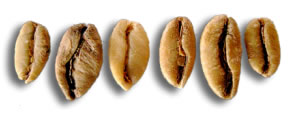 Liberica is a native Liberia, a large plant, very hardy and disease resistant. It can be grown right down at sea level, in the most difficult areas. It is produced mainly in Liberia, parts of Java, Malaysia and the Philippines. The yield is low and the flavour the poorest of the three varieties. Little is exported and it is useful mainly for blending.
Liberica is a native Liberia, a large plant, very hardy and disease resistant. It can be grown right down at sea level, in the most difficult areas. It is produced mainly in Liberia, parts of Java, Malaysia and the Philippines. The yield is low and the flavour the poorest of the three varieties. Little is exported and it is useful mainly for blending.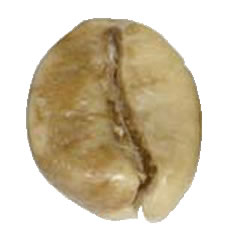 Coffea Robusta came to the world when the coffee plantations of India and the Middle East were being devastated by disease. A scientist, Emile Laurant, discovered this coffee tree growing wild in the Belgium Congo. It had many advantages; it was resistant to disease; it matured more quickly, and could produce fruit in two to three years. Furthermore, it provided multiple crops each year. Robusta would flourish at altitudes below 1000 metres and was idea for tropical domestic Africa.
Coffea Robusta came to the world when the coffee plantations of India and the Middle East were being devastated by disease. A scientist, Emile Laurant, discovered this coffee tree growing wild in the Belgium Congo. It had many advantages; it was resistant to disease; it matured more quickly, and could produce fruit in two to three years. Furthermore, it provided multiple crops each year. Robusta would flourish at altitudes below 1000 metres and was idea for tropical domestic Africa. There is a theory that coffee operates on a five to seven year cycle. When the trees come to fruition there is a coffee glut, prices fall, coffee farmers are ruined, trees are burned and so it all starts over again. On 17 July 1975, Brazil had its worst frost in history and lost two thirds of its entire crop. Coffee prices skyrocketed.
There is a theory that coffee operates on a five to seven year cycle. When the trees come to fruition there is a coffee glut, prices fall, coffee farmers are ruined, trees are burned and so it all starts over again. On 17 July 1975, Brazil had its worst frost in history and lost two thirds of its entire crop. Coffee prices skyrocketed.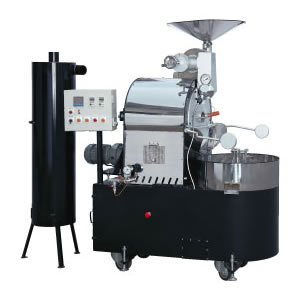
 In this process, the cherries go into a machine called a pulpier, which scrapes away the gummy outer layer. From there they move into large concrete tanks where they are soaked and fermented for a day. This rids of the outer remaining layers. They are washed again several times in clean water and put out to dry in the sun or placed in machine dryers. The drying process here is much quicker, and the wet method has many advantages. It is more precise, more thorough and there is much better control over fermentation, so the chances are the best coffee will come from the wet method.
In this process, the cherries go into a machine called a pulpier, which scrapes away the gummy outer layer. From there they move into large concrete tanks where they are soaked and fermented for a day. This rids of the outer remaining layers. They are washed again several times in clean water and put out to dry in the sun or placed in machine dryers. The drying process here is much quicker, and the wet method has many advantages. It is more precise, more thorough and there is much better control over fermentation, so the chances are the best coffee will come from the wet method.  Caffeine and decaffeination
Perhaps the most import thing to know about coffee and caffeine is that the strength of a coffee's taste has little or nothing to do with how much caffeine it contains! While caffeine itself has a slightly bitter flavour, our perceptions of strength comes from the degree of the roast (the darker the "stronger") and the ratio of coffee to water used during the brewing process which creates the actual strength of the coffee.
Caffeine and decaffeination
Perhaps the most import thing to know about coffee and caffeine is that the strength of a coffee's taste has little or nothing to do with how much caffeine it contains! While caffeine itself has a slightly bitter flavour, our perceptions of strength comes from the degree of the roast (the darker the "stronger") and the ratio of coffee to water used during the brewing process which creates the actual strength of the coffee.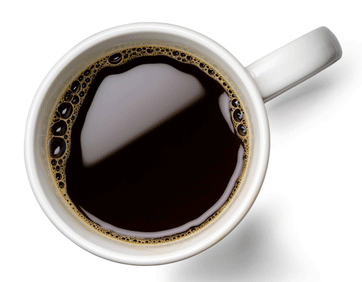 Question: Why doesn't my coffee at home taste as good as the coffee at the cafe?
Question: Why doesn't my coffee at home taste as good as the coffee at the cafe?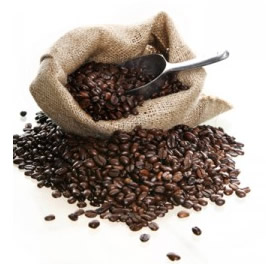 Question: How much coffee should I use if I don't want to make a full pot?
Question: How much coffee should I use if I don't want to make a full pot?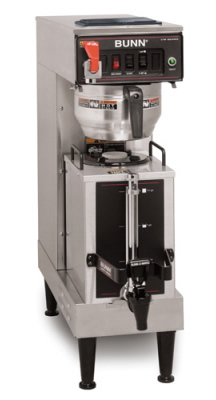 Question: Does my coffee brewer need any special maintenance?
Question: Does my coffee brewer need any special maintenance?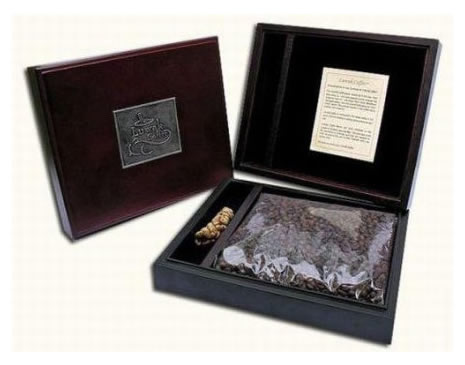 The most expensive coffee in the world does not hail from Jamaica or Hawaii, but instead from Indonesia.
The most expensive coffee in the world does not hail from Jamaica or Hawaii, but instead from Indonesia.